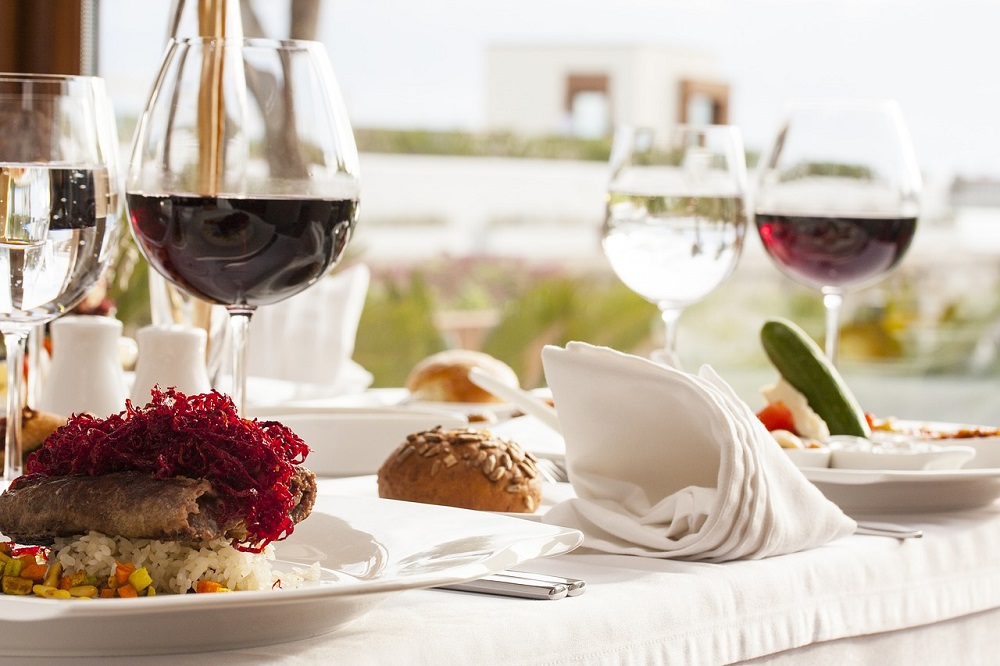For the most part, wine is not an important feature of the drinking scene and local cuisine in many Asian countries. But in some countries where both Asian food and wine are prominent, it is helpful to make a few educated guesses at which wines would best fit or go well for various Asian cuisine styles.

Of course, there is nothing like a successful wine and food pairing when both the dish and the wine work well together to make a sensory experience better than either one can give alone. Asian dishes have manifested a challenge to many people wherein pairing wine is concerned.
For a little help, here are several suggestions on how to match wines to Asian food. So, whether you are cooking yourself, ordering take-out, or dining in, the following suggestions will undoubtedly help you improve your next meal. Read on!
Spicy Asian Dishes
Although you will need, for the most part, to taste the differences of the spice and pair the wines accordingly, as a thumb rule, search for moderately aromatic, crisp, fresh, and fruitier wines to pair with spicy Asian dishes. The Traminers and Rieslings are a perfect choice.
Steer clear from buttery and oaky whites, or dry and neutral white wines for the most part. Restaurant picks for spicy Asian dishes include: La Spinetta Bionzo Barbera d’Asti, Merlot, Pinot Noir, Pinot Gris, Gewurztraminer, and Sauvignon Blanc.
Lemon and Orange Bases
It is best to Pair citrus based wines to Asian food with orange and lemon bases. Food reminiscent and remindful of citrus flavors such as orange and lemongrass will, more often than not, go well with a citrus-based Semillon, particularly the young ones. Consider Semillon and Chardonnay blends, or Semillon and Sauvignon blends as well. Moreover, Riesling is an excellent option for citrus-based sauces as well.
Flavours of Chilies and Coriander
It is ideal for pairing Riesling to the palate of chilies and coriander. The fresh, pure, and clean taste is a perfect match for this palate. For Thai food, consider fruity, dry wines to pair with the sweet and salty flavors. Semillons, Riesling, and Sauvignons can match well, as can Beaujolais-Villages and lightly chilled New World reds.
Chinese Food
When it comes to Chinese food or dishes, go for light wines. It is because most Chinese dishes tend to be slightly sweet and delicate. Thus, the wine needs to be wary of this. Ideal wines include New World Pinot Noirs, brut or demi-sec Champagne, and Riesling.
Japanese Dishes
It is best to pair New Zealand sparkling wines, dry Champagne, and Riesling to Japanese foods. Take note that Japanese dishes can be, for the most part, challenging to pair with a bottle of wine because of the dipping sauce flavors, pickles, and wasabi. Some flavors that may work include dry, firm white wines, and Chablis. But if you need to go for a bottle of red wine, opt for a Beaujolais.
Stir-fries
For stir-fries, it is best to pair it with stronger and robust wines. Keep in mind that most stir-fries have heavier flavors and sauces, and thus, they can handle or keep up with a fuller bodied wine. Opt for a well-rounded Chardonnays.
Match Stronger Wines with Strong Flavours
For Asian dishes with intense flavors, it is best to pair them with stronger wines. For example, thick sauce dishes and curries may go well with wines like Shiraz and Merlot. Moreover, modern New World whites are, for the most part, able to keep up with the astringent, sour, and bitter complexities found in many Indian hot foods like curries than conventional European wines.
For textured and richly flavored Asian food like prawn rolls with a peanut sauce and Vietnamese pork, Pinot Gris is an excellent choice. Avoid oak and heavy tannins with hot Asian dishes and try chilling the wine timidly before consuming.
Experiment
When it comes to pairing wine with Asian food, it does not hurt to have a dose of adventure and experiment. The notions elaborated in this post are suggestions, and some might not work to your preferences, while some might be spot on. It would be best to write down the failures and successes in a notebook, and depend on that to boost your knowledge of what pairs work best.
Takeaway
Asian cuisine has plenty of staple ingredients such as hoisin, kaffir lime leaves, lemongrass, ginger, chile paste, fish sauce, and soy, making it hard for some to pair it with the best wines in the world. Magnificent as they’re in Asian foods, ingredients like these can dull out a lot of wines, flatten them out, an rob them of their fruity elements. Essentially, making them taste hollow, dull, bitter, and oaky. To help you out, the above suggestions might help you with your palate. Also, try to experiment and hop on a new adventure.
Featured post
© Copyright 2019 Antonia, All rights Reserved. Written For: Tidylife


Leave a Reply